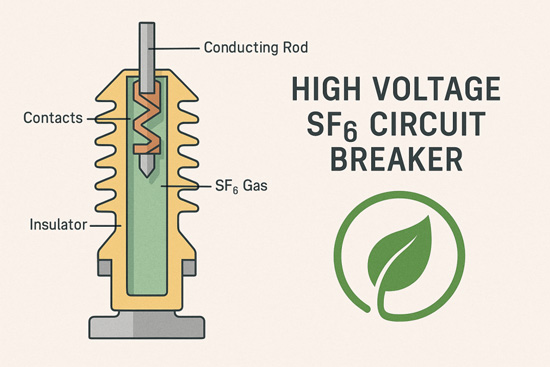With growing scrutiny on greenhouse gas emissions and evolving global regulations, the high voltage SF6 circuit breaker is at the center of industry discussions—not just for its performance, but also for its environmental footprint. While SF6 remains unmatched in dielectric strength and arc-quenching, buyers today are increasingly concerned about sustainability, alternatives, and lifecycle accountability.

1. Unmatched Electrical Performance
SF6 circuit breakers continue to be preferred in high-voltage networks due to their excellent insulation properties, compact design, and proven arc-quenching ability, especially above 66kV.
2. Environmental Concerns: SF6 as a Potent Greenhouse Gas
SF6 has a global warming potential (GWP) over 23,000 times greater than CO₂. Though leakage rates are low in sealed systems, pressure is mounting from environmental agencies and grid operators to account for gas use, storage, and disposal.
3. Regulatory Momentum Toward Alternatives
In regions like the EU, SF6 use is under legislative review, encouraging manufacturers and buyers to consider alternatives like fluoronitrile blends, dry air, or vacuum interruption for certain voltage ranges.
4. Responsible Use & End-of-Life Management
Leading manufacturers now offer SF6 recovery and recycling services, and new breakers come with integrated gas monitoring to ensure tight sealing and minimal emissions. Buyers are advised to request documentation on gas lifecycle and disposal protocols when sourcing equipment.
·Evaluate SF6 alternatives for ≤145kV systems
·Confirm whether breaker design includes gas leakage monitoring
·Ask about sealed-for-life guarantees or maintenance intervals
·Check vendor compliance with IEC 62271 series and regional environmental policies
·Plan for gas reclaim and recycling during decommissioning